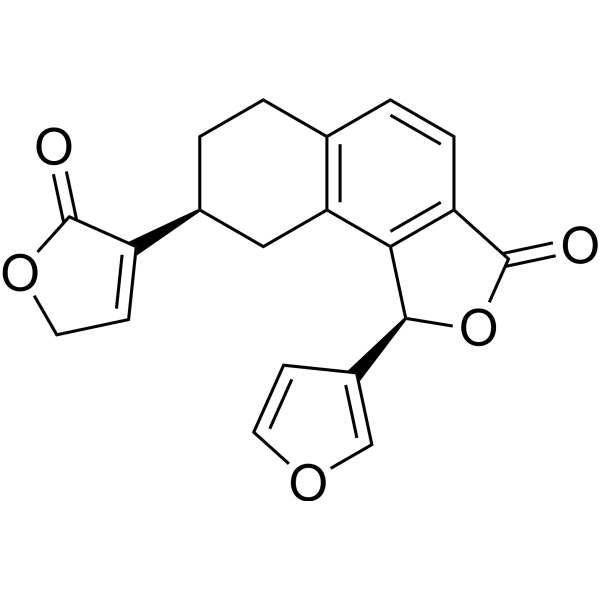
Tilifodiolide
CAS No. 126724-95-6
Tilifodiolide( —— )
Catalog No. M30860 CAS No. 126724-95-6
Tilifodiolide exerts in vitro and in vivo anti-inflammatory activity and in vivo antinociceptive effects.
Purity : >98% (HPLC)
 COA
COA
 Datasheet
Datasheet
 HNMR
HNMR
 HPLC
HPLC
 MSDS
MSDS
 Handing Instructions
Handing Instructions
| Size | Price / USD | Stock | Quantity |
| 5MG | 603 | In Stock |


|
| 50MG | Get Quote | In Stock |


|
| 100MG | Get Quote | In Stock |


|
Biological Information
-
Product NameTilifodiolide
-
NoteResearch use only, not for human use.
-
Brief DescriptionTilifodiolide exerts in vitro and in vivo anti-inflammatory activity and in vivo antinociceptive effects.
-
DescriptionTilifodiolide exerts in vitro and in vivo anti-inflammatory activity and in vivo antinociceptive effects. Tilifodiolide exerted antidiarrheal activity by decreasing the intestinal fluid accumulation and vasorelaxant effects mediated by nitric oxide and cyclic guanosine monophosphate, it also showed anxiolytic and antidepressant effects by the partial involvement of gamma-Aminobutyric acid (GABA) receptors and the possible participation of α2-adrenoreceptors, respectively.
-
In VitroTilifodiolide (200 mg/kg; single dose) shows anti-inflammatory activity in vivo in acetic acid induced-writhing mouse model.
-
In Vivo——
-
Synonyms——
-
PathwayOthers
-
TargetOther Targets
-
Recptor——
-
Research Area——
-
Indication——
Chemical Information
-
CAS Number126724-95-6
-
Formula Weight336.3
-
Molecular FormulaC20H16O5
-
Purity>98% (HPLC)
-
Solubility——
-
SMILES——
-
Chemical Name——
Shipping & Storage Information
-
Storage(-20℃)
-
ShippingWith Ice Pack
-
Stability≥ 2 years
Reference
molnova catalog



related products
-
Azido-PEG5-azide
Azido-PEG5-azide is a PEG-based PROTAC linker that can be used in the synthesis of PROTACs.
-
Uperolein
Uperolein
-
2-(2-Aminothiazole-4...
2-(2-Aminothiazole-4-yl)-2-methoxyiminoa is a compound.



 Cart
Cart
 sales@molnova.com
sales@molnova.com


